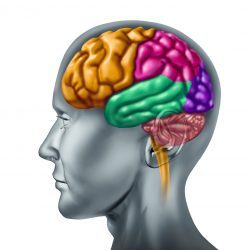“A correct diagnosis is three-fourths the remedy.” Mahatma Gandhi
“The art of clinical diagnosis lies in the ability to ask the right questions.” Harriet B. Braiker
What is Parkinsonism? How is this different from Parkinson’s? Parkinson’s is a neurodegenerative disorder that destroys dopamine-producing dopaminergic neurons. As Parkinson’s progresses, other brain areas are affected, leading to motor- and non-motor symptoms. By contrast, parkinsonism is an umbrella term that encompasses disorders ranging from (i) the side effects of medications, (ii) chronic head traumas, (iii) metabolic disease, (iv) toxins, and (v) neurological diseases. Parkinsonism has also been termed atypical parkinsonism/Parkinson’s or Parkinson’s plus. Thus, Parkinson’s disease is a type of parkinsonism.
“Listen to your patient, he is telling you the diagnosis.” William Osler
Parkinson’s vs. Parkinsonism: Distinguishing Parkinson’s from other forms of parkinsonism is often difficult, with diagnostic criteria relying heavily on the rate and order of cardinal symptom development (rigidity, postural instability, bradykinesia, and resting tremor) together with the presence or absence of other numerous motor and non-motor symptoms. The minor differences here must be difficult for the neurologist to sort out from each patient.
“Only the inquiring mind solves problems.” Edward Hodnett
Atypical Parkinsonism: Primary parkinsonian syndromes have been recognized as pathologically distinct disorders. These degenerative conditions mimic several of the symptoms of Parkinson’s. However, patients with these alternate conditions find their disease progression more substantial. Furthermore, they typically have earlier morbidity as compared to idiopathic Parkinson’s.
To further complicate this storyline are the secondary forms of parkinsonism. These disorders are associated with extrinsic factors like heavy metal depositions (e.g., copper, manganese) or infectious viral agents like the 1918 pandemic influenza, prion-like diseases, and other neurotropic contagious microorganisms.
Here is a very brief description of some of the significant atypical parkinsonisms. The overlap with Parkinson’s can confuse even a well-trained neurologist, further complicating the diagnosis and treatment strategies.
•Multiple system atrophy parkinsonian variant (MSA-P) can develop early dysautonomia and rapid use of a wheelchair for safety. Dysautonomia is a condition that affects the autonomic nervous system (ANS).
•Progressive supranuclear palsy (PSP) can develop early falls, swallowing difficulties, and extraocular muscle abnormalities in the form of a supranuclear gaze paresis or palsy. A supranuclear gaze palsy is an inability to look in a particular direction due to cerebral impairment.
•Corticobasal degeneration (CBD) can significantly overlap with other degenerative diseases like Alzheimer’s. Still, diagnosis may be aided by a heavily asymmetric parkinsonian motor symptom alongside limb ataxia, apraxia, alien limb phenomenon, or hemisensory abnormalities. Ataxia is the loss of complete control of bodily movements. Apraxia is the inability to perform particular purposive actions due to brain damage. The alien limb phenomenon refers to the involuntary motor activity of a limb in conjunction with the feeling of estrangement from that limb. The definition of hemisensory abnormalities is variable, but it describes a feeling of altered sensation on one side of the body.
•Dementia with Lewy Bodies (DLB) and frontotemporal dementia (FTD) present with cognitive difficulties and motor symptoms of parkinsonism. This typically occurs within one to three years after the initial presentation.
“You can believe the diagnosis, not the prognosis.” Deepak Chopra
Conclusions: There is a need to better understand the pathophysiology of these atypical parkinsonism disorders compared to Parkinson’s. The landscape describing these disorders is a wide-open abstract drawing. However, we are slowly gaining knowledge and awareness to better diagnose and treat all patients with parkinsonism.
“If you don’t ask the right questions, you don’t get the right answers. A question asked in the right way often points to its own answer. Asking questions is the ABC of diagnosis. Only the inquiring mind solves problems.” Edward Hodnett


